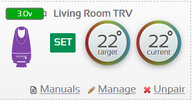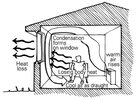Hi All,
In need of some urgent assistance…
I'm getting a Worcester Bosch 30kw combi boiler fitted, the ground floor will be having two vertical rads (1800x472 double) in the dinning room and one in the front room, the boiler feeds water to them first as well as two pipes that go upstairs to my first floor where there will be one vertical radiator (1800x472 double) in bedroom one and horizontal radiator (600x1400 double) in bedroom two and a towel radiator in the main bathroom. The pipes then go downstairs to my hallway where there is a horizontal radiator (600x1400 double) and pipes also go up to my loft where there is a a horizontal radiator (600x1200 double) and a vertical radiator (1600x472 double) and a towel radiator in the en-suite….
All radiators are designer oval shaped….
BUT….
My central heating pipes through out the house are 15MM, only from the boiler about 4 foot do they begin as 22mm then it’s all 15MM pipes…
Will I need to upgrade the pipes as some that have given me quotes stated it could be an issue when balancing the rads and it’s best to upgrade the pipes….
please could you advise me accordingly - your advice would be much appreciated…
thank you….
In need of some urgent assistance…
I'm getting a Worcester Bosch 30kw combi boiler fitted, the ground floor will be having two vertical rads (1800x472 double) in the dinning room and one in the front room, the boiler feeds water to them first as well as two pipes that go upstairs to my first floor where there will be one vertical radiator (1800x472 double) in bedroom one and horizontal radiator (600x1400 double) in bedroom two and a towel radiator in the main bathroom. The pipes then go downstairs to my hallway where there is a horizontal radiator (600x1400 double) and pipes also go up to my loft where there is a a horizontal radiator (600x1200 double) and a vertical radiator (1600x472 double) and a towel radiator in the en-suite….
All radiators are designer oval shaped….
BUT….
My central heating pipes through out the house are 15MM, only from the boiler about 4 foot do they begin as 22mm then it’s all 15MM pipes…
Will I need to upgrade the pipes as some that have given me quotes stated it could be an issue when balancing the rads and it’s best to upgrade the pipes….
please could you advise me accordingly - your advice would be much appreciated…
thank you….




